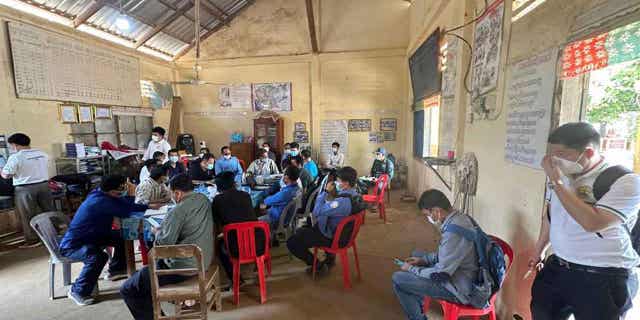
The father of an 11-year-old girl in Cambodia who died this week after contracting bird flu has tested positive for the virus but has not displayed any major symptoms, health authorities said Friday.
The death came amid heightened concerns over a wave of bird flu that has spread through much of the world since late 2021, posing a potential public health risk.
The girl, from a village in the southeastern province of Prey Veng, died Wednesday at a hospital in the capital, Phnom Penh, shortly after tests confirmed she had Type A H5N1 bird flu, according to Cambodia’s Health Ministry. She had fallen ill on Feb. 16, and when her condition declined she was sent to the hospital with a fever as high as 102 degrees Fahrenheit with coughing and throat pain.
Bird flu, also known as avian influenza, normally spreads between sick poultry but can sometimes spread from poultry to humans. The recent detection of infections in a variety of mammals, including at a large mink farm in Spain, has raised concern among experts that the virus could evolve to spread more easily between people, and potentially trigger a pandemic.
11-YEAR-OLD CAMBODIAN GIRL DIES FROM BIRD FLU IN COUNTRY’S FIRST KNOWN HUMAN INFECTION SINCE 2014
Health Ministry spokesperson Ly Sovann told The Associated Press that the Cambodian father’s case is under investigation, and it was not yet known how he was infected. He has been put in isolation at a local district hospital for monitoring and treatment.
A ministry team collected samples from 12 people from the dead girl’s village known to have had direct contact with her, and laboratory tests confirmed Friday that only her father was infected.
Health professionals have expressed concern about a wave of bird flu that has spread worldwide in the past year and a half, but consider the current risk to humans to be low.

Authority meets health experts before spraying disinfectant at a village in Cambodia, on Feb. 24, 2023. The father of an 11-year-old girl who died this week after contracting the avian influenza in Cambodia has tested positive for the virus, but has not displayed any major symptoms. (Cambodia Ministry of Health via AP)
“There is always a risk of human infection, particularly in people in close contact with poultry or wild birds, and this risk increases during times where circulation of avian influenza is particularly high, as it is now,” Jonathan Ball, professor of molecular virology at England’s University of Nottingham, said in an emailed statement.
BIRD FLU KILLS SEA LIONS AND THOUSANDS OF PELICANS IN PERU’S PROTECTED AREAS
“Thankfully, human infections are still rare, and the likelihood of onward human to human transmission very low. But this virus keeps cropping up in various mammals and this could potentially increase the possibility of further human infections. The risk to humans is still very low, but it’s important that we continue to monitor circulation of flu in both bird and mammal populations and do everything we can to reduce the number of infections seen,” Ball added.
According to the World Health Organization, there were 56 bird flu cases in humans in Cambodia from 2003 until 2014, and 37 of them were fatal. Globally, about 870 human infections and 457 deaths have been reported to the WHO in 21 countries, for an overall case fatality rate of 53%. But the pace has slowed, and there have been about 170 infections and 50 deaths in the last seven years. In the vast majority of cases, the infected people got it directly from infected birds.
“Between 2005 and 2020, 246 million poultry died or were culled because of avian influenza,” says the World Organization for Animal Health.
CLICK HERE TO GET THE FOX NEWS APP
“Since October 2021, an unprecedented number of outbreaks has been reported in several regions of the world, reaching new geographical areas and causing devastating impacts on animal health and welfare,” the Paris-based agency says on its website.
The U.S. Centers for Disease Control and Prevention agrees that the current H5N1 outbreak is mostly an animal health issue.
“However, people should avoid direct and close contact with sick or dead wild birds, poultry, and wild animals,” it warns on its website. “People should not consume uncooked or undercooked poultry or poultry products, including raw eggs. Consuming properly cooked poultry, poultry products, and eggs is safe.”

 Latest Breaking News Online News Portal
Latest Breaking News Online News Portal




